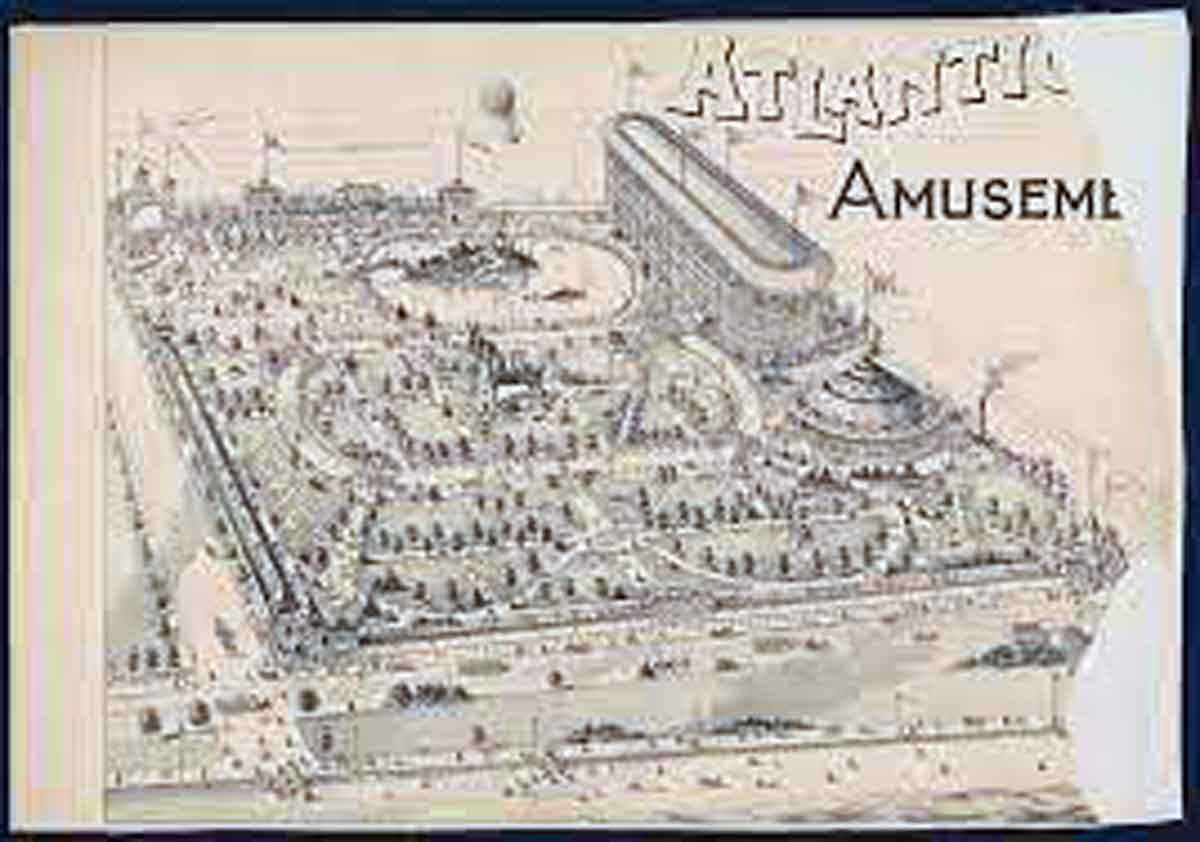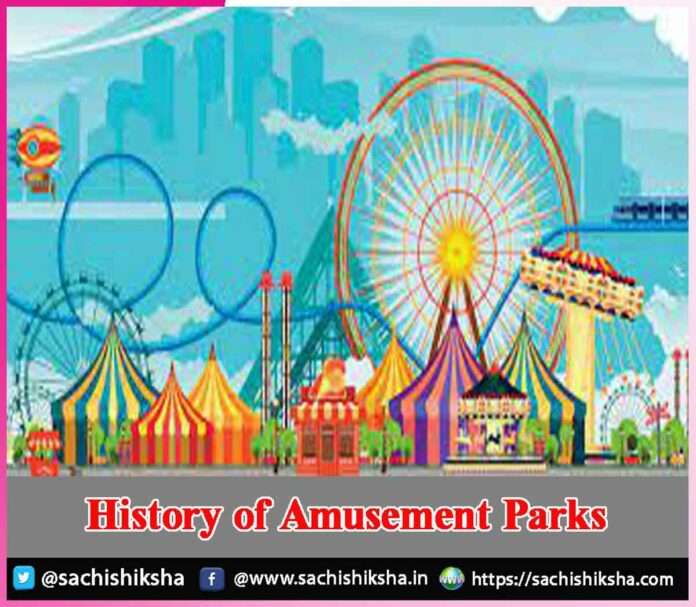History of Amusement Parks
Introduction: The history of amusement parks is a captivating narrative that unfolds over centuries, reflecting the evolving nature of human entertainment, societal changes, and technological advancements. As we recognize them today, amusement parks have profound historical origins dating back to prehistoric times. However, the concept of organized leisure and recreation for the masses truly began to take shape in the 19th century.
Table of Contents
Ancient Origins:

18th Century Pleasure Gardens:
In the 18th century, we witnessed the emergence of pleasure gardens in Europe, which can be seen as precursors to modern amusement parks. Vauxhall Gardens in London and Tivoli Gardens in Copenhagen were among the most notable. These expansive, landscaped areas offered music, dancing, fireworks, and other amusements, attracting people from various social classes. While mechanical rides did not characterize these gardens, they set the stage for creating designated spaces for entertainment.
Industrial Revolution Influence:
Throughout the 19th century, the Industrial Revolution brought significant societal changes. Cities becoming more populated and a growing middle class created a demand for leisure activities. As people sought new forms of entertainment, entrepreneurs began to capitalize on the opportunity to amuse the masses.
World’s First Amusement Park:
The world’s first true amusement park, this title is often attributed to “Bakken,” located near Copenhagen, Denmark. Bakken’s origins can be traced back to 1583, when it began as a place with natural springs. Over time, it evolved into an entertainment destination featuring various attractions and amusements. While Bakken may not have had the same level of mechanized rides we associate with modern amusement parks, it laid the groundwork for the concept.
Coney Island and the Golden Age:
The late 1800s and early 1900s witnessed the ascent of Coney Island in New York as a hub for the burgeoning amusement park industry. Coney Island became home to iconic parks such as Steeplechase Park, Luna Park, and Dreamland. These parks, characterized by their fantastical architecture and electrifying lights, offered a range of attractions from roller coasters to Ferris wheels. Luna Park opened in 1903 and was renowned for its imaginative design and innovative use of electricity in its attractions.
Innovation and Technological Advancements:
In the early 20th century, we witnessed a surge in innovation within the amusement park industry. Mechanical rides such as roller coasters became increasingly popular, offering a new level of excitement and thrills. Technological advancements, such as using electricity for lighting and animatronics, transformed the nighttime experience of amusement parks.
Disneyland and the Theme Park Revolution:
The mid-20th century brought about a revolutionary shift in the concept of amusement parks with the opening of Disneyland in 1955 in Anaheim, California. Conceived and designed by Walt Disney, Disneyland departed from traditional amusement parks by introducing the concept of themed lands and immersive storytelling. The park was a harmonious blend of attractions, entertainment, and dining, creating a cohesive and enchanting experience for visitors.
The success of Disneyland spurred the creation of other Disney parks, including Walt Disney World in Florida, which opened in 1971. These parks set the standard for themed entertainment and established a template for future developments in the industry.
Expansion and Globalization:
As the popularity of theme parks soared, significant chains like Universal Studios and Six Flags expanded their operations, offering a mix of thrill rides, shows, and themed experiences. The 20th century saw the global spread of the amusement park phenomenon, opening parks in Europe, Asia, and beyond. Each region brought its own cultural influences and unique attractions to the industry.
Technological Advancements in the Late 20th Century:
In the late 20th century, the amusement park experience continued to evolve with rapid technological advancements. Roller coasters became more sophisticated, incorporating loops, inversions, and launch systems. Theme parks embraced cutting-edge technologies, introducing Virtual Reality (VR) and simulation rides that gave visitors a new level of immersion. Integrating film and multimedia elements into attractions became increasingly prevalent, blurring the lines between traditional rides and cinematic experiences.
Contemporary Trends:
In the 21st century, amusement parks continue to adapt to changing tastes and preferences. Technological advancements play a central role in shaping the modern park experience. Augmented Reality (AR) and interactive elements are being incorporated into attractions, enhancing the level of engagement for visitors.
Moreover, the industry has a growing emphasis on sustainability and eco-friendly practices. Many parks are implementing measures to reduce their environmental impact, including energy-efficient lighting, waste reduction initiatives, and eco-friendly ride designs.
Global Diversity:
Amusement parks have become a global phenomenon, with major parks and attractions on every continent. Asia, in particular, has seen a surge in the construction of large-scale theme parks, offering a mix of traditional and cutting-edge attractions. The Middle East has joined the ranks, with ambitious projects aiming to create world-class entertainment destinations.
Conclusion:
The history of amusement parks is a fascinating journey through time, reflecting the changing landscape of human entertainment, societal shifts, and technological progress. From the ancient origins of communal gatherings to today’s immersive and technologically advanced experiences, amusement parks have continually adapted to meet the desires and expectations of a diverse and global audience. As we look to the future, the evolution of amusement parks will continue with new technologies, sustainability practices, and innovative storytelling shaping the following chapters in this storied history.













































